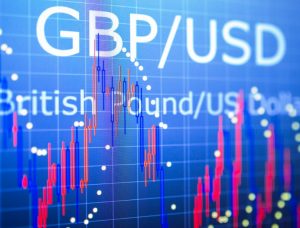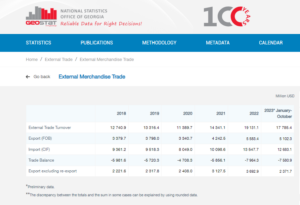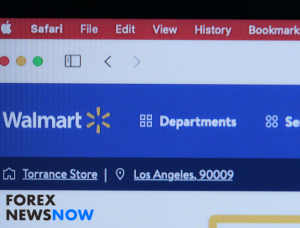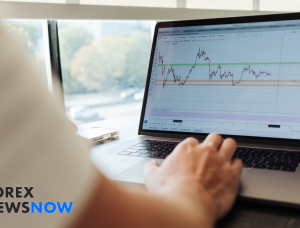
The foreign exchange (forex) market is a highly dynamic and ever-changing environment. It is a market that is constantly influenced by various economic, political, and social factors. Therefore, the risks associated with forex trading are always changing, and it is crucial for every trader to keep a close eye on these risks. Ignoring or failing these risks can cause serious problems financially for any trader.
In this article, we will discuss the current risks in the forex market and how they can affect forex traders. Analyzing these risks and conditions in detail will lead to better and more financially rational decisions while trading FX.
Permanent Risks for FX Markets That You Should Avoid
The foreign exchange (forex) market is a complex and dynamic financial market that is subject to various risks that can affect traders’ investments. Some of the permanent risks in the forex market include economic, political, and interest rate risks. These risks can be difficult to predict and can result in significant losses for traders.
Economic risk is a significant factor that affects the forex market. Economic factors such as inflation, economic growth, and employment rates can significantly impact a country’s currency value. For example, if a country’s economy is experiencing high inflation rates, the value of its currency may decrease, and traders who have invested in that currency will experience a loss. Traders must stay up-to-date with economic news and data releases to anticipate changes in currency values.
In addition, political events such as elections, wars, and changes in government policies can significantly impact currency values. For example, if a country’s government imposes trade restrictions or changes its fiscal policies, it may result in a decrease in currency value. Traders must monitor political developments and events to identify potential risks.
Interest rate risk is also a significant factor on the forex market. Central banks often adjust interest rates to control inflation and stimulate economic growth. When interest rates change significantly, it causes price fluctuations. Such as when the bank decides to increase interest rates, it causes the price raising of the major currency and those who have invested in this currency will revive higher profits. Traders must stay informed about interest rate policies and decisions made by central banks.
Having solid knowledge and permanently being updated about changes is the most effective way to control the impact of factors on your trading possibilities. They should stay up-to-date with economic news and data releases, monitor political developments, and be aware of interest rate policies and decisions made by central banks. On the other hand, it is mandatory to have some risk management strategies to avoid emotional decisions caused by worrying about risks.
In conclusion, permanent risks in the forex market exist and can significantly impact traders’ investments. Economic, political, and interest rate risks are just some of the factors that can affect currency values. Traders must stay informed, have a solid understanding of the forex market, and implement effective risk management strategies to minimize potential losses.
Current Situation on the FX Market
Investors are bracing themselves for potential volatility later in the day as choppy action continues in financial markets during the second half of the week. Traders should be vigilant of significant risks such as economic data releases and geopolitical events, as the upcoming economic docket will showcase crucial information, including business and consumer sentiment data from the Eurozone, March inflation data from Germany, and fourth-quarter Gross Domestic Product (GDP) readings from the US. These risks can affect forex markets by causing price fluctuations, and traders should be aware of them to avoid potential losses.
On the other hand, USD still remains stable at around 102.50, while the benchmark 10-year US Treasury bond yield remains in the weekly range above 3.5%. US stock index futures are trading modestly higher in the early European session. It is expected that during the 4th quarter, the GDP will be estimated at 3.9%, in the US. A significant decrease is expected in Spain by 3.1%.
Germany’s annual HICP is also projected to decrease from 9.3% to 7.5%. Despite the lower inflation data from Spain, the EUR/USD remains steady in its daily channel around 1.0850 in the European morning. The GBP/USD regained its momentum and surged to the 1.2350 level in the European session after Wednesday’s pullback, while the UK’s FTSE 100 Index started slightly higher. Conversely, the USD/JPY enjoyed remarkable gains on Wednesday but appears to have entered a consolidation phase early Thursday, with the last trading price being below 132.50.
- SEO Powered Content & PR Distribution. Get Amplified Today.
- Platoblockchain. Web3 Metaverse Intelligence. Knowledge Amplified. Access Here.
- Source: https://www.forexnewsnow.com/forex-analysis/current-price-fluctuations-you-should-consider-as-a-fx-trader/
- :is
- 1
- 100
- 102
- 7
- 9
- a
- About
- above
- Action
- addition
- affect
- After
- always
- analyzing
- and
- annual
- anticipate
- ARE
- around
- article
- AS
- associated
- At
- Bank
- Banks
- BE
- being
- below
- Benchmark
- Better
- bond
- business
- by
- CAN
- Cause
- caused
- causes
- causing
- central
- Central Banks
- change
- Changes
- changing
- Channel
- Close
- complex
- conclusion
- conditions
- Consider
- consolidation
- constantly
- consumer
- consumer sentiment
- continues
- control
- control inflation
- country’s
- crucial
- Currency
- Current
- daily
- data
- day
- decisions
- decrease
- Despite
- detail
- developments
- difficult
- discuss
- Domestic
- during
- dynamic
- Early
- Economic
- Economic growth
- Economic News
- economy
- Effective
- Elections
- employment
- entered
- Environment
- estimated
- EUR/USD
- European
- Eurozone
- events
- ever-changing
- Every
- example
- exchange
- expected
- experience
- experiencing
- eye
- factors
- financial
- Financial Market
- financially
- Fiscal
- fluctuations
- For
- foreign
- foreign exchange
- forex
- forex market
- Forex markets
- Forex Trading
- from
- FTSE
- Futures
- FX
- FX markets
- Gains
- GBP/USD
- GDP
- geopolitical
- Germany
- Government
- gross
- Growth
- Half
- hand
- Have
- High
- High inflation
- higher
- highly
- How
- HTTPS
- identify
- Impact
- implement
- in
- include
- Including
- Increase
- index
- inflation
- Inflation Rates
- influenced
- information
- informed
- interest
- INTEREST RATE
- Interest Rates
- invested
- Investments
- IT
- ITS
- Keep
- knowledge
- Last
- lead
- Level
- loss
- losses
- made
- major
- major currency
- management
- mandatory
- March
- Market
- Markets
- Momentum
- Monitor
- more
- morning
- most
- news
- of
- on
- Other
- permanent
- permanently
- phase
- plato
- Plato Data Intelligence
- PlatoData
- policies
- political
- possibilities
- potential
- predict
- price
- Price Fluctuations
- problems
- Product
- profits
- projected
- pullback
- Quarter
- raising
- range
- Rate
- Rates
- Rational
- Releases
- remains
- remarkable
- restrictions
- result
- Revive
- Risk
- risk management
- risks
- Second
- sentiment
- serious
- session
- should
- showcase
- significant
- significantly
- situation
- Social
- solid
- some
- Spain
- stable
- started
- stay
- steady
- Still
- stock
- strategies
- subject
- such
- Surged
- that
- The
- The Weekly
- Them
- themselves
- therefore
- These
- to
- trade
- trader
- Traders
- Trading
- treasury
- understanding
- up-to-date
- upcoming
- updated
- us
- US Treasury
- USD/JPY
- value
- Values
- various
- Volatility
- Way..
- Wednesday
- week
- weekly
- while
- WHO
- will
- with
- Yield
- Your
- zephyrnet











